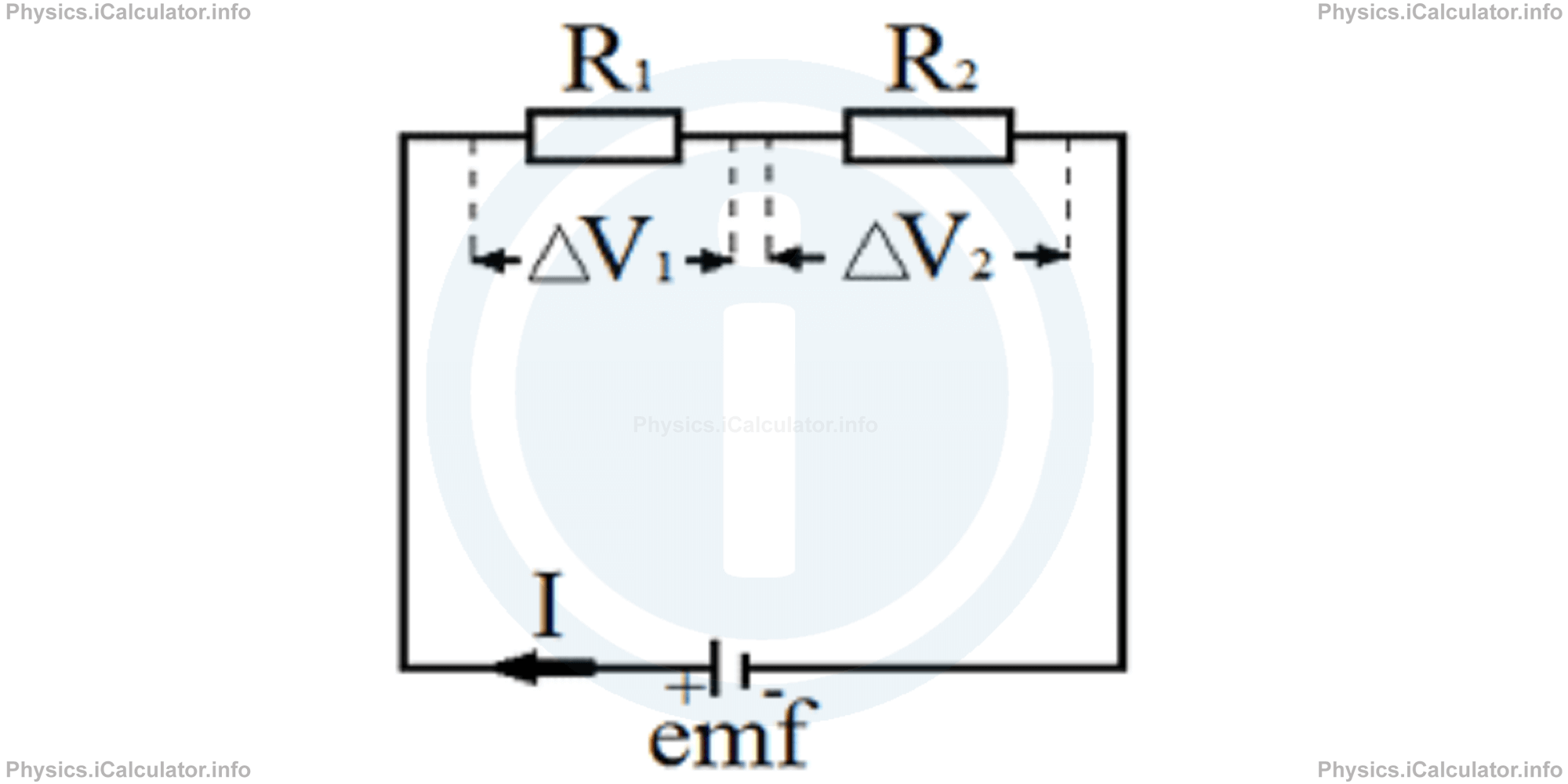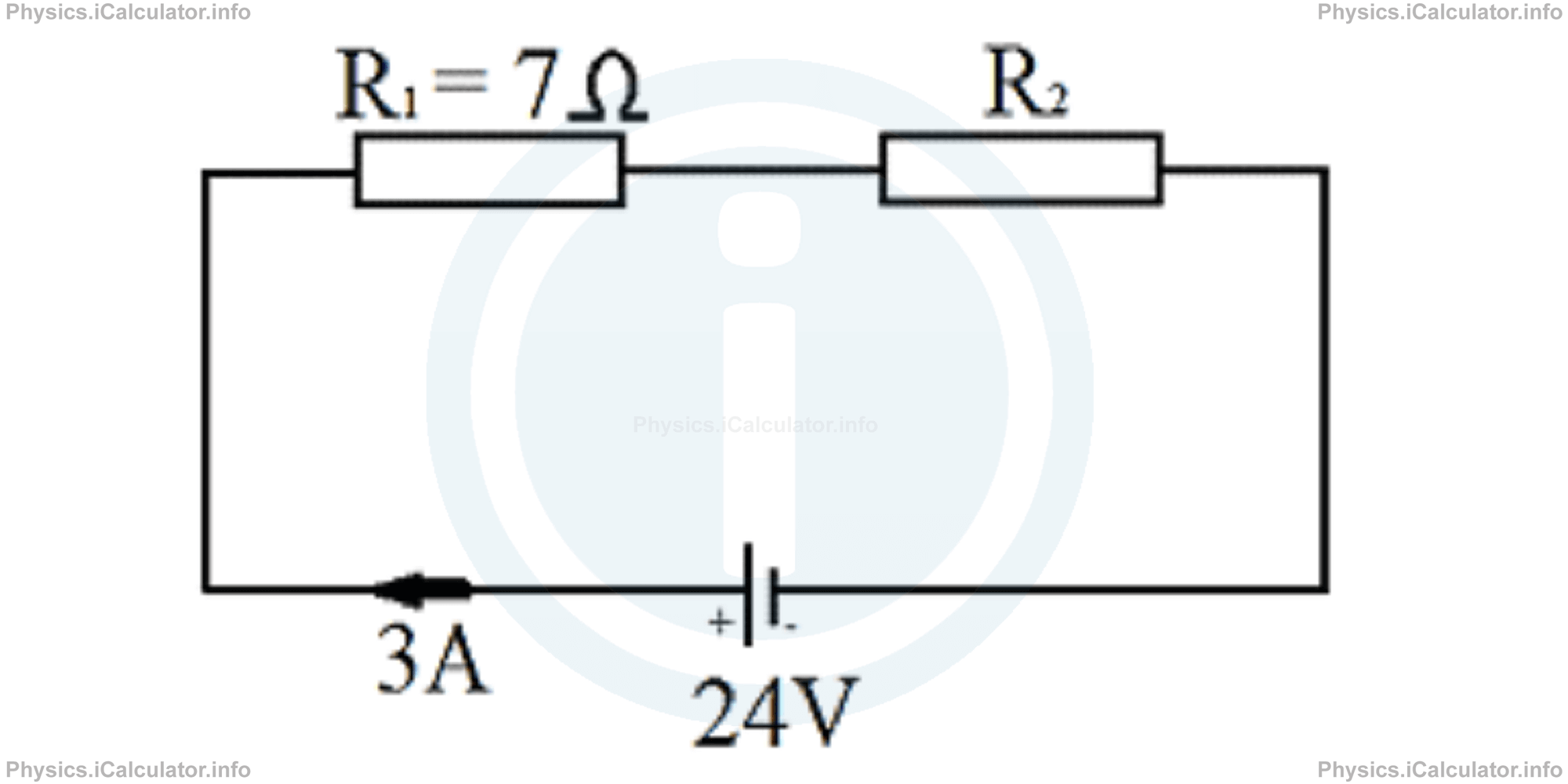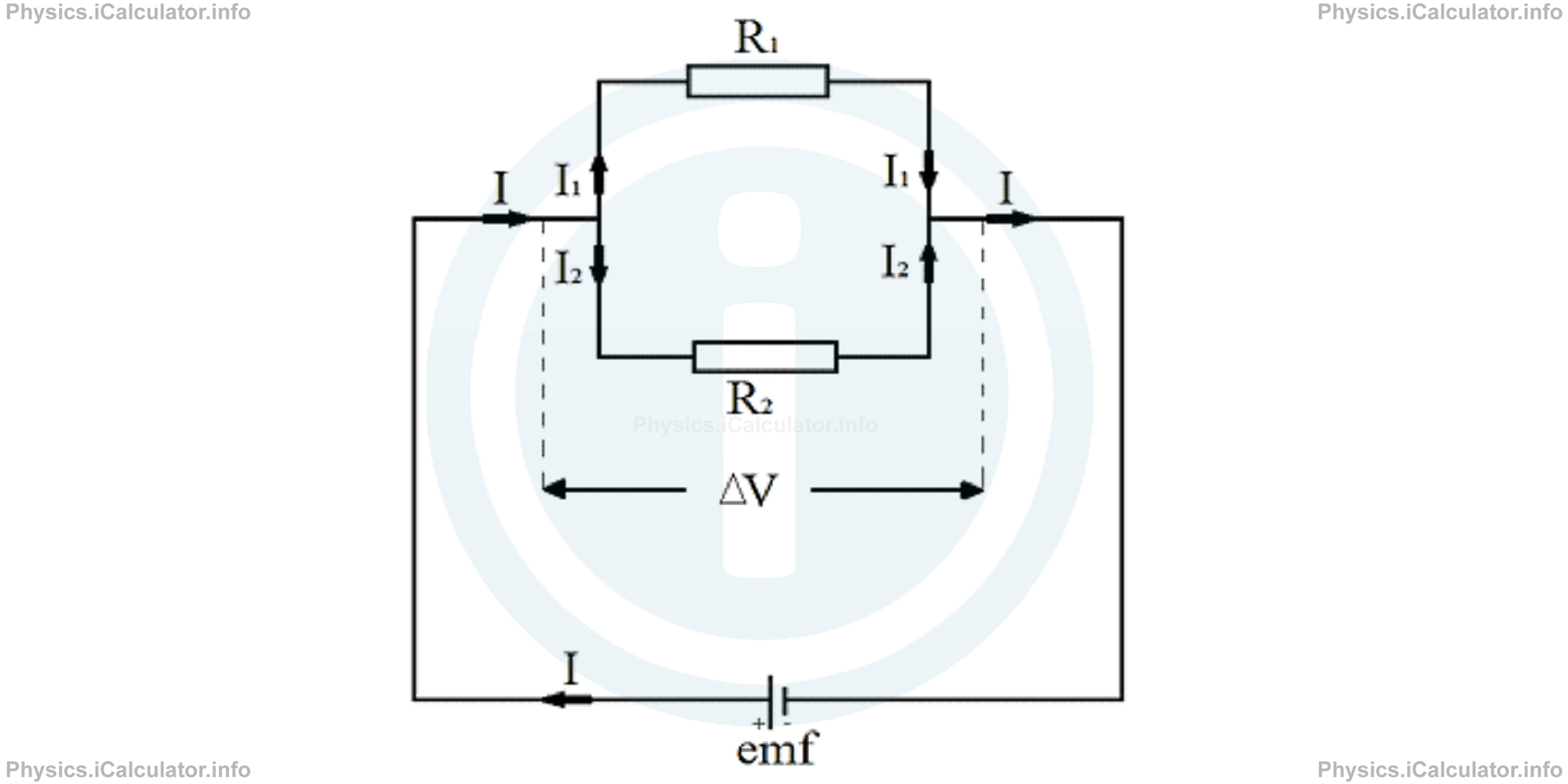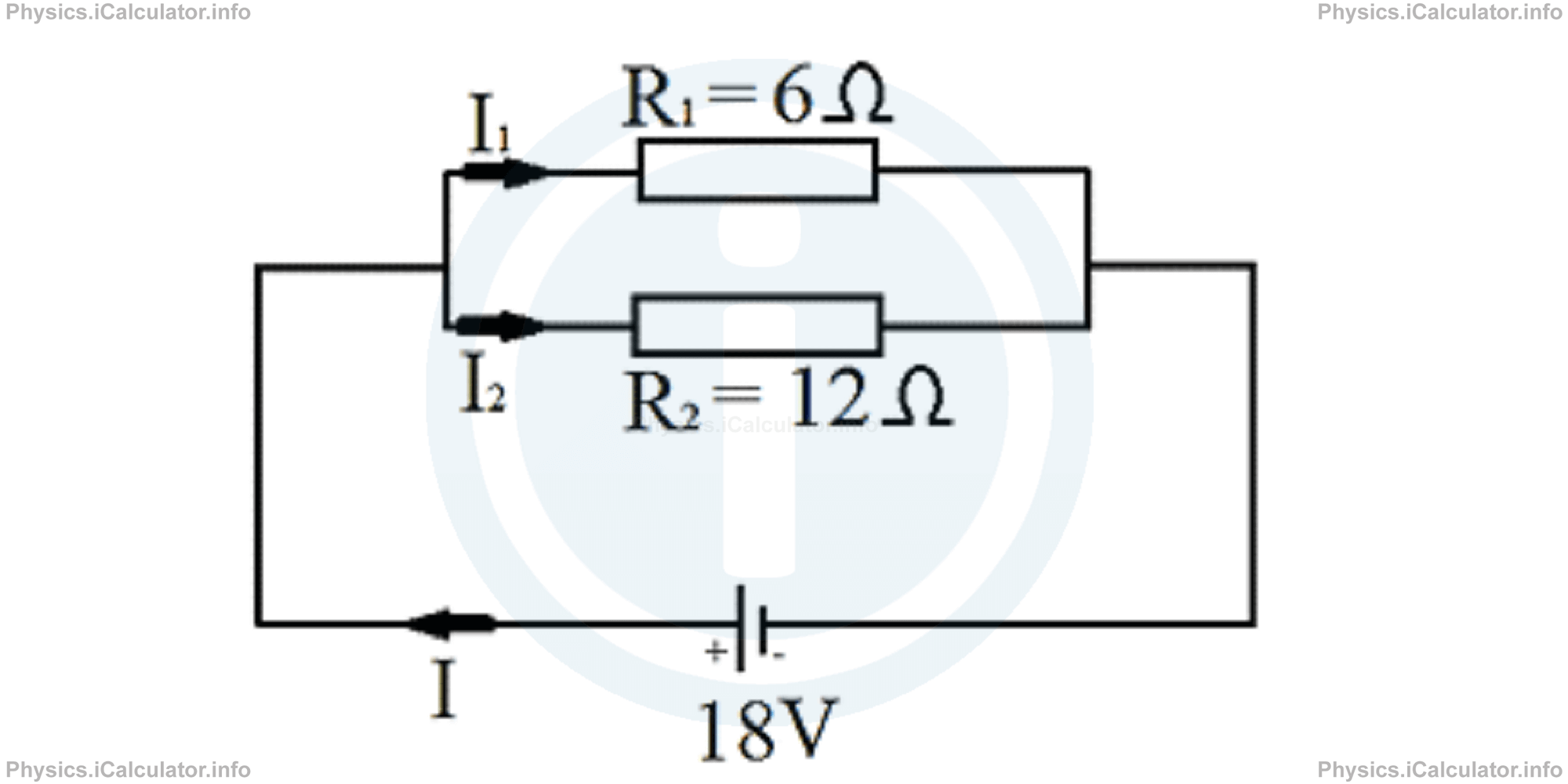Menu
Physics Lesson 15.4.4 - Series and Parallel Circuits
Please provide a rating, it takes seconds and helps us to keep this resource free for all to use
Welcome to our Physics lesson on Series and Parallel Circuits, this is the fourth lesson of our suite of physics lessons covering the topic of Electric Circuits. Series and Parallel Circuits. Short Circuits, you can find links to the other lessons within this tutorial and access additional physics learning resources below this lesson.
Series and Parallel Circuits
Now, let's extend the concept of series and parallel combination of resistors to include the other quantities such as potential difference and current as well. Before continuing with numerical examples, first let's prove the correctness of the two formulae used in the combination of resistors which we have provided in article 14.2.
Let's consider two resistors connected in series in a circuit, as shown in the figure below.

Since there is the same current I flowing through both resistors, we can write
Also, we have
Applying Ohm's Law, in the last equation, we obtain
Simplifying the current I from both sides, we obtain the known formula of series combination of resistors
Example 1
What is the value of resistance R2 in the circuit shown below? Neglect the resistance of conductor and that of battery.

Solution 1
We have the following clues:
emf = 24V
I = 3A
R1 = 7Ω
R2 = ?
First, we calculate the total (equivalent) resistance using Ohm's Law formula for the whole circuit. We have:
= 24V/3A
= 8Ω
Since the resistors are connected in series, we have:
R2 = Req - R1
= 8Ω - 7Ω
= 1Ω
Now, let's consider two resistors connected in parallel, as shown in the figure below.

The current I divides in the two branches, and the corresponding values of current in each branch are I1 and I2 respectively. The potential difference in each resistor is the same as that in the entire branch. If the resistor of wire and that of battery are neglected, we obtain:
Also, the equation for currents is
Applying Ohm's Law in the last equation, we obtain
∆V/Req =∆V/R1 + ∆V/R2
Simplifying ΔV from both sides, we obtain for parallel combination of resistors the known equation:
Example 2
What is the current in the main branch and the current flowing in each parallel branch of the circuit shown below? Use two methods for solving this exercise.
Solution 2
Method 1
This method consist in calculating the equivalent resistance, which helps finding the current in the main branch first. Then, since potential difference in each branch of the parallel setup is considered as equal the electromotive force of battery, we uses Ohm's Law to calculate the current in each resistor.
The equivalent resistance of the (parallel) circuit is:
= 1/6 + 1/12
= 2/12 + 1/12
= 3/12
Thus,
=4Ω
Now, let's calculate the current I in the main branch using Ohm's Law. We have
= 18 V/4 Ω
= 4.5 A
Since the electromotive force of battery corresponds to the potential difference in each wire of the parallel branch, we obtain for the currents I1 and I2 flowing in these wires:
= 18 V/6 Ω
= 3 A
and
= 18 V/12 Ω
= 1.5 A
Method 2
This method consists in finding the currents in each wire directly by applying Ohm's Law. Then, we add these currents to find the current in the main branch. Thus, we have:
= 18 V/6 Ω
= 3A
and
=18 V/12 Ω
= 1.5A
Therefore, the current in the main branch is
= 3A + 1.5A
= 4.5A
As you can see, the results are the same in both cases.
You have reached the end of Physics lesson 15.4.4 Series and Parallel Circuits. There are 5 lessons in this physics tutorial covering Electric Circuits. Series and Parallel Circuits. Short Circuits, you can access all the lessons from this tutorial below.
More Electric Circuits. Series and Parallel Circuits. Short Circuits Lessons and Learning Resources
Whats next?
Enjoy the "Series and Parallel Circuits" physics lesson? People who liked the "Electric Circuits. Series and Parallel Circuits. Short Circuits lesson found the following resources useful:
- Series Parallel Feedback. Helps other - Leave a rating for this series parallel (see below)
- Electrodynamics Physics tutorial: Electric Circuits. Series and Parallel Circuits. Short Circuits. Read the Electric Circuits. Series and Parallel Circuits. Short Circuits physics tutorial and build your physics knowledge of Electrodynamics
- Electrodynamics Revision Notes: Electric Circuits. Series and Parallel Circuits. Short Circuits. Print the notes so you can revise the key points covered in the physics tutorial for Electric Circuits. Series and Parallel Circuits. Short Circuits
- Electrodynamics Practice Questions: Electric Circuits. Series and Parallel Circuits. Short Circuits. Test and improve your knowledge of Electric Circuits. Series and Parallel Circuits. Short Circuits with example questins and answers
- Check your calculations for Electrodynamics questions with our excellent Electrodynamics calculators which contain full equations and calculations clearly displayed line by line. See the Electrodynamics Calculators by iCalculator™ below.
- Continuing learning electrodynamics - read our next physics tutorial: Kirchhoff Laws
Help others Learning Physics just like you
Please provide a rating, it takes seconds and helps us to keep this resource free for all to use
We hope you found this Physics lesson "Electric Circuits. Series and Parallel Circuits. Short Circuits" useful. If you did it would be great if you could spare the time to rate this physics lesson (simply click on the number of stars that match your assessment of this physics learning aide) and/or share on social media, this helps us identify popular tutorials and calculators and expand our free learning resources to support our users around the world have free access to expand their knowledge of physics and other disciplines.
Electrodynamics Calculators by iCalculator™
- Amount Of Substance Obtained Through Electrolysis Calculator
- Charge Density Calculator
- Electric Charge Stored In A Rc Circuit Calculator
- Electric Field In Terms Of Gauss Law Calculator
- Electric Power And Efficiency Calculator
- Electron Drift Velocity Calculator
- Equivalent Resistance Calculator
- Force Produced By An Electric Source Calculator
- Joules Law Calculator
- Ohms Law Calculator
- Potential Difference In Rc Circuit Calculator
- Resistance Due To Temperature Calculator
- Resistance Of A Conducting Wire Calculator